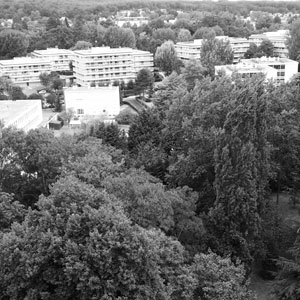The First World Forum on urban Forestry has just been held!
The fact is historical: more than half of the population lives in a city today. A figure that could reach 70% in 2050!
This Forum was held in Mantua (Italy). It was organized by FAO (Food and Agriculture Organization of the United Nations) and several Italian institutions involved in forest management.
Why is urban forestry topical?
The stakes are substantial! This is a challenge for all the major cities in the world.
High pressure is exerted by urbanisation on the natural areas. In addition, the new challenges regarding climate change and food and water needs will be increasing.
The consequences are environmental, economic and social.
The trees in town offer many benefits and services to the urban community.
Nowadays, many studies have shown that the urban population’s quality of life is mainly linked to the eco-system services provided by Trees. Peri urban forest or Urban forest and the green areas in the city are all concerned.
Thus, FAO issued a call for action to ensure that cities will become greener and healthier.
The urban forest is a strategic component!
FAO recommends that peri-urban forests, parks, trees in the streets, private gardens and other public spaces would all be considered as a whole. These natural spaces would be used as a strategic component to meet sustainable development goals.
The United Nations focuses on a few measures, including:
- The creation of green spaces and urban forests.
- Preserving the biodiversity and the integrity and complexity of the ecosystem in the city.
- The preservation of linkages between rural and urban areas, including through ecological corridors.
- The protection of healthy forest ecosystems for their influence on urban waters.
The objective is to encourage participants to invest in a series of ecological and sustainable measures. It also means integrating urban forest management more into city planning.
What are the benefits of trees in the city?
Trees attenuate extreme temperature differences in the urban environment. In fact, trees protect against the wind and lower the temperatures in warm climate. More efficient than air conditioning, trees can save energy. Thus, urban forests and green spaces directly improve urban microclimates.
Trees mitigate the impacts of climate change. Trees and green areas are involved in preventing soil erosion, drought, landslides and floods.
Green spaces create a reassuring climate in the city and improve the quality of the environment.
By filtering rainwater, trees can improve water availability and quality.
Trees create a beneficial effect on the health and well being of urban dwellers. Trees contribute to a healthy life, less stress, well-being and health.
In short, urban forestry responds to many current citizen issues! Private and public areas are concerned. Learn more about Tree management
=> To follow: the European Forum on urban Forestry to be held on 22 and 25 May in Cologne (Germany).

